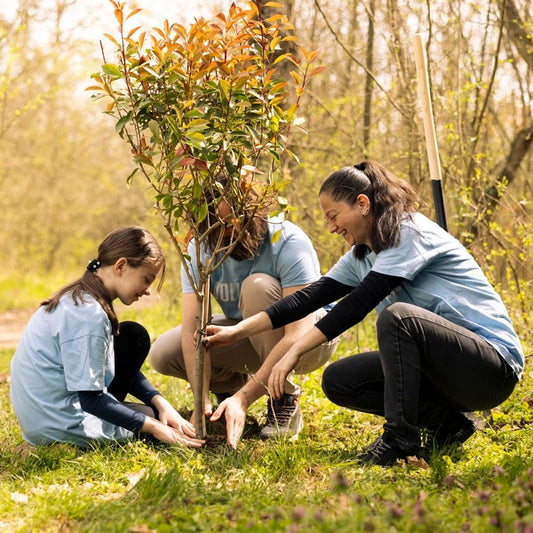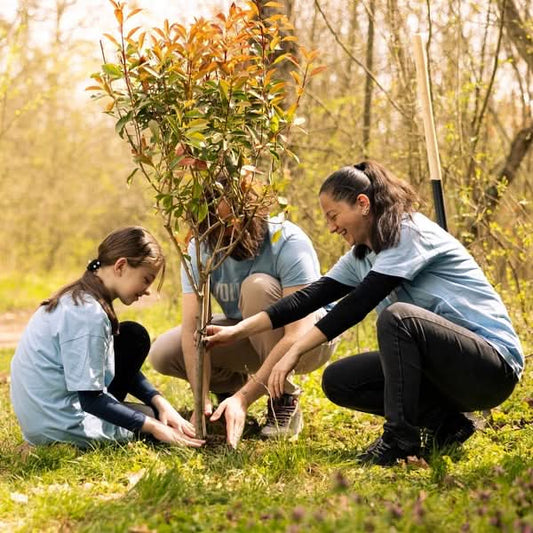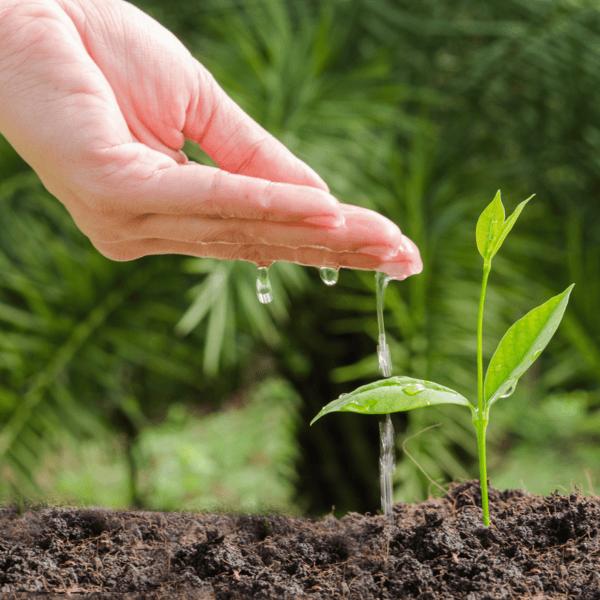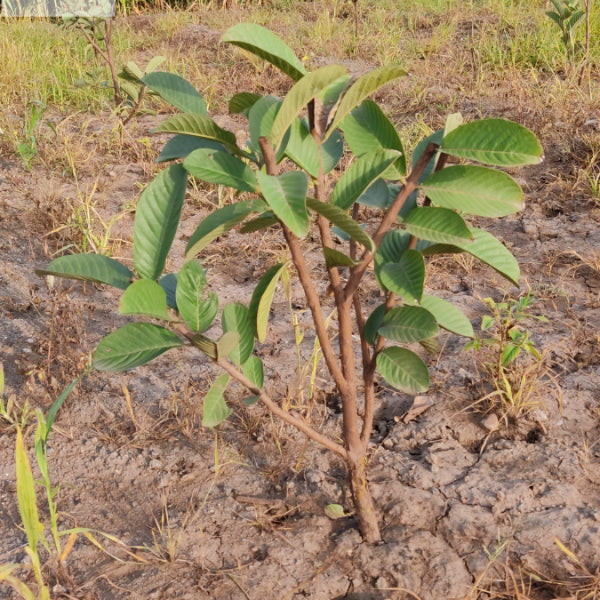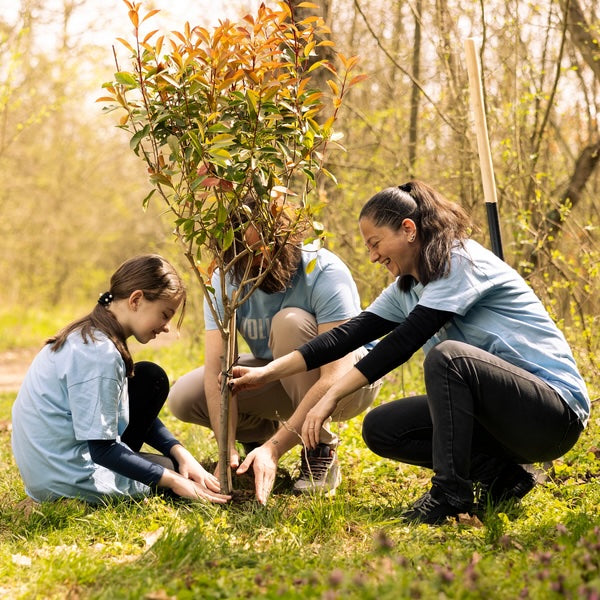Carbon Footprint of Water Usage: Showers, Baths & Daily Habits
Carbon Footprint of Water Usage: Showers, Baths & Daily Habits Water is essential for life, but did you know that our daily water usage contribut Read more
Connect with us
-
👥 Corporates
If you are looking for:
- 🌲 Tree Plantation Events
- 📊 CSR Projects
📧 corporate@growbilliontrees.com
📞 +91 9699723523
💬 +91 9370599291 WhatsApp (Only)
🕒 Mon - Sat | 10am - 7pm IST
-
🧩 Tree Plantation NGOs
If you are looking for:
- 💰 Financial Assistance
- 🤝 Operational Support
📧 support@growbilliontrees.com
📞 +91 9699723523
💬 +91 9370599291 WhatsApp (Only)
🕒 Mon - Sat | 10am - 7pm IST
-
🌼 Individuals
If you are looking for:
- 👥 Group Tree Plantation Drive
- 🌳 Bulk Tree Plantation
📞 +91 9699723523
💬 +91 9370599291 WhatsApp (Only)
🕒 Mon - Sat | 10am - 7pm IST
Trending
Trees for Corporates
Carbon Footprint of Water Usage: Showers, Baths & Daily Habits
Water is essential for life, but did you know that our daily water usage contributes significantly to our carbon footprint? Understanding the carbon footprint of water usage, especially from activities like showers and baths, is crucial in our fight against climate change. By making small changes in our daily habits, we can collectively make a big impact on the planet.
What is Grow Billion Trees Team?
The Grow Billion Trees Team is a global initiative dedicated to planting trees and restoring ecosystems to combat climate change. By focusing on reforestation and afforestation, this team aims to absorb carbon dioxide from the atmosphere, helping to mitigate the effects of global warming. Their mission is not just about planting trees; it’s about creating a sustainable future for generations to come.
Why Grow Billion Trees Team Matters for the Planet
Every tree planted is a step towards a healthier planet. The Grow Billion Trees Team inspires individuals and communities to take action against climate change. By engaging in tree planting, we not only reduce carbon emissions but also enhance biodiversity, improve air quality, and support local ecosystems. Together, we can create a greener, more sustainable world.
Factors Contributing to Carbon Footprint
- Water Heating: Heating water for showers and baths consumes energy, often from fossil fuels, contributing to CO₂ emissions.
- Water Treatment: The process of treating and transporting water requires energy, adding to the carbon footprint.
- Frequency and Duration: Longer showers and more frequent baths increase water usage and energy consumption.
- Type of Water Source: Water sourced from distant locations requires more energy for transportation.
- Daily Habits: Other habits, such as washing clothes and dishes, also contribute to overall water-related carbon emissions.
Example Calculation
To understand how the carbon footprint is measured, let’s consider a simple example:
If a shower uses 10 liters of water per minute and you take a 10-minute shower, that’s 100 liters of water. If the energy required to heat that water emits 0.5 kg of CO₂ per liter, the calculation would be:
Water Usage: 100 liters × 0.5 kg CO₂/liter = 50 kg CO₂
This means that a single shower can contribute 50 kg of CO₂ to your carbon footprint!
Tips to Reduce Carbon Footprint
- Shorten Showers: Aim for 5-7 minute showers to save water and energy.
- Install Low-Flow Fixtures: Use low-flow showerheads and faucets to reduce water usage without sacrificing pressure.
- Use Cold Water: Whenever possible, wash clothes in cold water to save energy.
- Be Mindful of Baths: Limit baths and consider taking showers instead, as they typically use less water.
- Fix Leaks: Repair any leaks in your home to prevent water waste.
FAQs
1. How does water usage contribute to my carbon footprint?
Water usage contributes to your carbon footprint primarily through the energy required to heat and treat the water. The more water you use, the more energy is consumed, leading to higher CO₂ emissions.
2. What is the carbon footprint of a bath compared to a shower?
A typical bath can use around 150-200 liters of water, while a shower may use 50-100 liters. This means baths generally have a higher carbon footprint due to increased water usage and energy consumption.
3. Can planting trees really offset my carbon footprint?
Yes! Planting trees absorbs CO₂ from the atmosphere, helping to offset your carbon footprint. The Grow Billion Trees Team focuses on large-scale tree planting to make a significant impact on climate change.
4. What are some other daily habits that affect my carbon footprint?
Other daily habits include using energy-efficient appliances, reducing meat consumption, and minimizing waste. Each of these actions can help lower your overall carbon emissions.
Conclusion
Understanding the carbon footprint of water usage is essential for making informed choices that benefit the planet. By adopting simple habits and supporting initiatives like the Grow Billion Trees Team, we can all contribute to a healthier environment. Plant trees with Grow Billion Trees to offset your footprint.
You may like
Water Footprint
Did you know that every drop counts? Your water footprint is the total volume of freshwater used to produce the goods and services you consume. When it comes to showers and baths, it’s not just about the water flowing from the tap; it’s about the hidden water used in everything from your morning coffee to that fancy avocado toast. So, next time you’re luxuriating in a bubble bath, remember that your water footprint is more than just the water in the tub. It’s a whole ecosystem of hydration!
Shower vs. Bath
The eternal debate! Is it better to soak in a tub or rinse off in a shower? While a long, hot bath might feel like a mini-vacation, it can guzzle more water than a quick shower. On average, a shower uses about 2.1 gallons per minute, while a bath can use up to 70 gallons! So, if you’re looking to save water and reduce your carbon footprint, you might want to consider a speedy shower. But hey, if you’re feeling fancy, just make sure to keep it short and sweet!
Daily Water Habits
Let’s talk about those daily habits that can either save or waste water. From brushing your teeth to washing your hands, every little action adds up. Did you know that turning off the tap while brushing can save up to 8 gallons a day? That’s enough to fill a small fish tank! So, next time you’re tempted to let the water run, think of those little fishies and make a splash in the right direction. Small changes can lead to big savings, and your future self will thank you!
Eco-Friendly Showerheads
If you’re serious about reducing your carbon footprint, consider upgrading to an eco-friendly showerhead. These nifty devices can save you water without sacrificing your shower experience. With flow rates as low as 1.5 gallons per minute, you can enjoy a guilt-free rinse while still feeling like a superstar. Plus, they often come with fancy features like adjustable sprays and water-saving technology. So, you can feel good about your water usage while still enjoying your daily dose of relaxation!
Water-Saving Tips
Want to be a water-saving superhero? There are plenty of tips and tricks to help you reduce your water usage without sacrificing comfort. For instance, try timing your showers to keep them under 10 minutes, or install a dual-flush toilet to save water with every flush. You can also collect cold water while waiting for your shower to warm up and use it to water plants. Every little bit helps, and soon you’ll be the proud owner of a water-efficient home that’s the envy of your neighborhood!
Impact of Water Usage on Carbon Footprint
It’s time to connect the dots between water usage and your carbon footprint. Water treatment and distribution require energy, which means that the more water you use, the larger your carbon footprint becomes. By reducing your water consumption, you’re not just saving H2O; you’re also cutting down on greenhouse gas emissions. So, the next time you’re tempted to take a long shower, remember that every minute counts—not just for your water bill, but for the planet too!
Corporate Plantations
FAQ
What is the carbon footprint of water usage in showers?
The carbon footprint of water usage in showers primarily comes from the energy required to heat the water. On average, a 10-minute shower can emit around 1.5 kg of CO2, depending on your water heater's efficiency. By reducing shower time or using a low-flow showerhead, you can significantly cut down on your carbon emissions. Remember, every drop counts, and so does every minute!
How does taking baths compare to showers in terms of carbon footprint?
Baths generally have a higher carbon footprint than showers because they require more water and energy to heat it. A standard bath can use up to 80 gallons of water, leading to increased energy consumption. If you want to save the planet while soaking, consider filling the tub only halfway or switching to quick showers. Your carbon footprint will thank you!
What daily habits can reduce my water usage and carbon footprint?
Simple daily habits can make a big difference! Turn off the tap while brushing your teeth, fix leaks promptly, and opt for shorter showers. You can also collect rainwater for gardening. These small changes not only save water but also reduce the energy needed for heating, ultimately lowering your carbon footprint. It’s a win-win for you and Mother Earth!
Is it better to use a dishwasher or wash dishes by hand for a lower carbon footprint?
Surprisingly, using a dishwasher can be more eco-friendly than washing dishes by hand, especially if it’s a modern, energy-efficient model. Dishwashers use less water and energy per load compared to handwashing, particularly if you leave the tap running. Just remember to run it only when full, and you’ll be saving water and reducing your carbon footprint like a pro!
How can I make my shower more eco-friendly?
To make your shower eco-friendly, consider installing a low-flow showerhead, which can reduce water usage by up to 50%. Limit your shower time to 5-7 minutes, and try to shower during off-peak hours to reduce energy demand. You can also heat water using solar panels for an even greener approach. Showering sustainably is the new cool!
What role does water heating play in my carbon footprint?
Water heating is a significant contributor to your carbon footprint, accounting for about 18% of your home’s energy use. The type of water heater you use—gas, electric, or solar—affects your emissions. Opting for energy-efficient models or using renewable energy sources can drastically reduce your carbon footprint. So, let’s heat things up sustainably!
Can I offset my carbon footprint from water usage?
Absolutely! You can offset your carbon footprint from water usage by supporting reforestation projects, like those by Grow Billion Trees. Each tree planted absorbs CO2, helping to balance out your emissions. Additionally, adopting water-saving habits and using renewable energy sources can further reduce your overall impact. It’s all about planting the seeds for a greener future!
What is the impact of water wastage on the environment?
Water wastage has a cascading effect on the environment, leading to increased energy consumption, habitat destruction, and higher carbon emissions. When we waste water, we also waste the energy used to pump, treat, and heat it. By being mindful of our water usage, we can help conserve resources and reduce our carbon footprint. Remember, every drop saved is a step towards a healthier planet!





